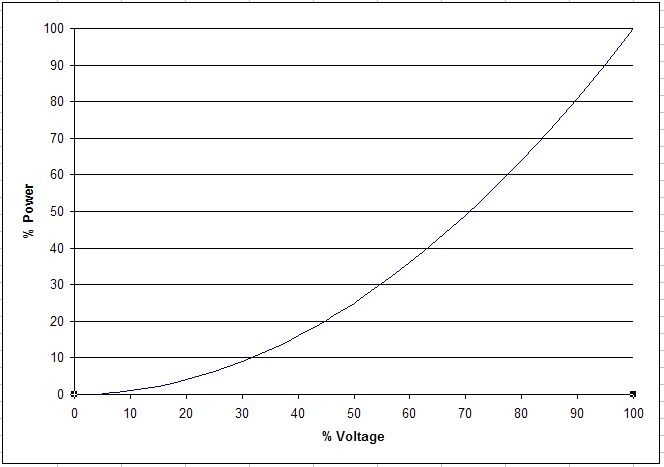I am thinking about using voltage control on my next amp and will probably do it with different taps on the PT rather than a power mosfet.
I need to approximate the output power at different voltages to “guess” the required voltage taps.
Since P = V^2/R , and R is a constant resistance for measuring output power is it safe to assume the equation holds up for all operating conditions of the valve. i.e. as per the chart below

Cheers
I need to approximate the output power at different voltages to “guess” the required voltage taps.
Since P = V^2/R , and R is a constant resistance for measuring output power is it safe to assume the equation holds up for all operating conditions of the valve. i.e. as per the chart below

Cheers
Comment